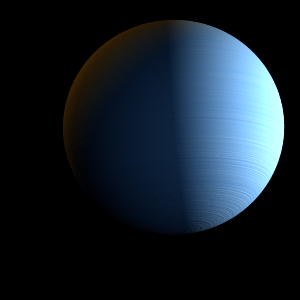|
|
Space Astro
|
Info for exoplanet "Sispon Mede"
| Scientific (actual) data |
|---|
| Name | OGLE-2003-BLG-235L b |
| Planet status | Confirmed |
| Planet mass | 2.34 |
| Semi major axis | 4 |
| Angular distance | 0.000981 |
| Discovered | 2004 |
| Updated | 2023-03-13 |
| Publication | Published in a refereed paper |
| Detection type | Microlensing |
| Mass measurement type | Microlensing |
| Alternate names | MOA-2003-BLG-53 b |
| Star name | OGLE-2003-BLG-235L |
| Right ascension | 271.32° |
| Declination | -28.9° |
| Mag i | 19.7 |
| Star distance | 5260 |
| Star mass | 0.56 |
| Star alternate names | MOA-2003-BLG-53 |
| Wikipedia article | OGLE-2003-BLG-235L b |
Back
| |
| Fictional info (?) |
|---|
| Suggested name | Sispon Mede |
| Planet type | Large cold gas giant |
| The outer atmosphere is visibly segregated into several bands at different latitudes, resulting in turbulence and storms along their interacting boundaries. |
| Atmosphere | Methane | 49% |
| Sulfur dioxide | 39% |
| Hydrogen deuteride (HD) | 11% |
| Ozone | 0.049% |
| Krypton | 0.026% |
| Nitric oxide | 0.0064% |
| Hydrogen | 0% |
| Atmospheric pressure | 60 bar |
 |
| No known satellites |
| Google search for Sispon mede |
|
Website by Joachim Michaelis
|
|
|
|